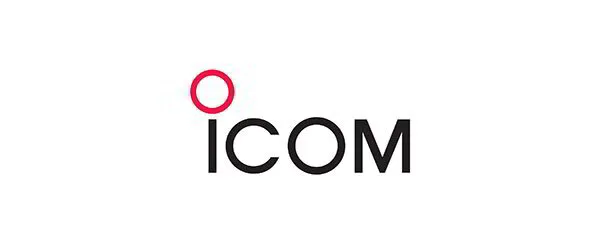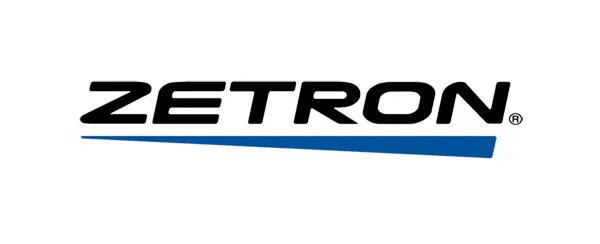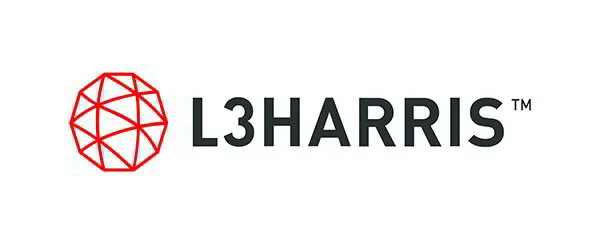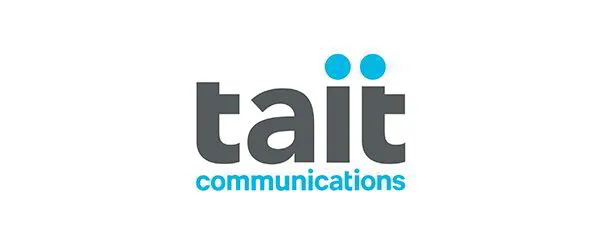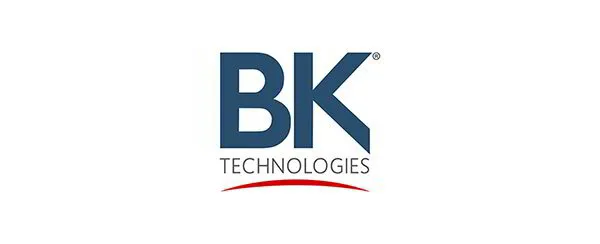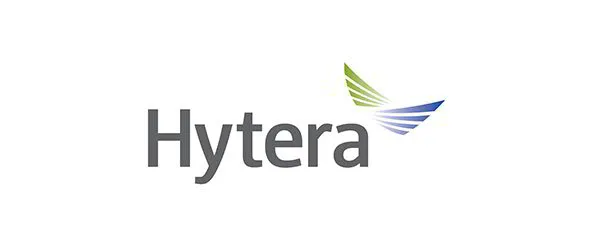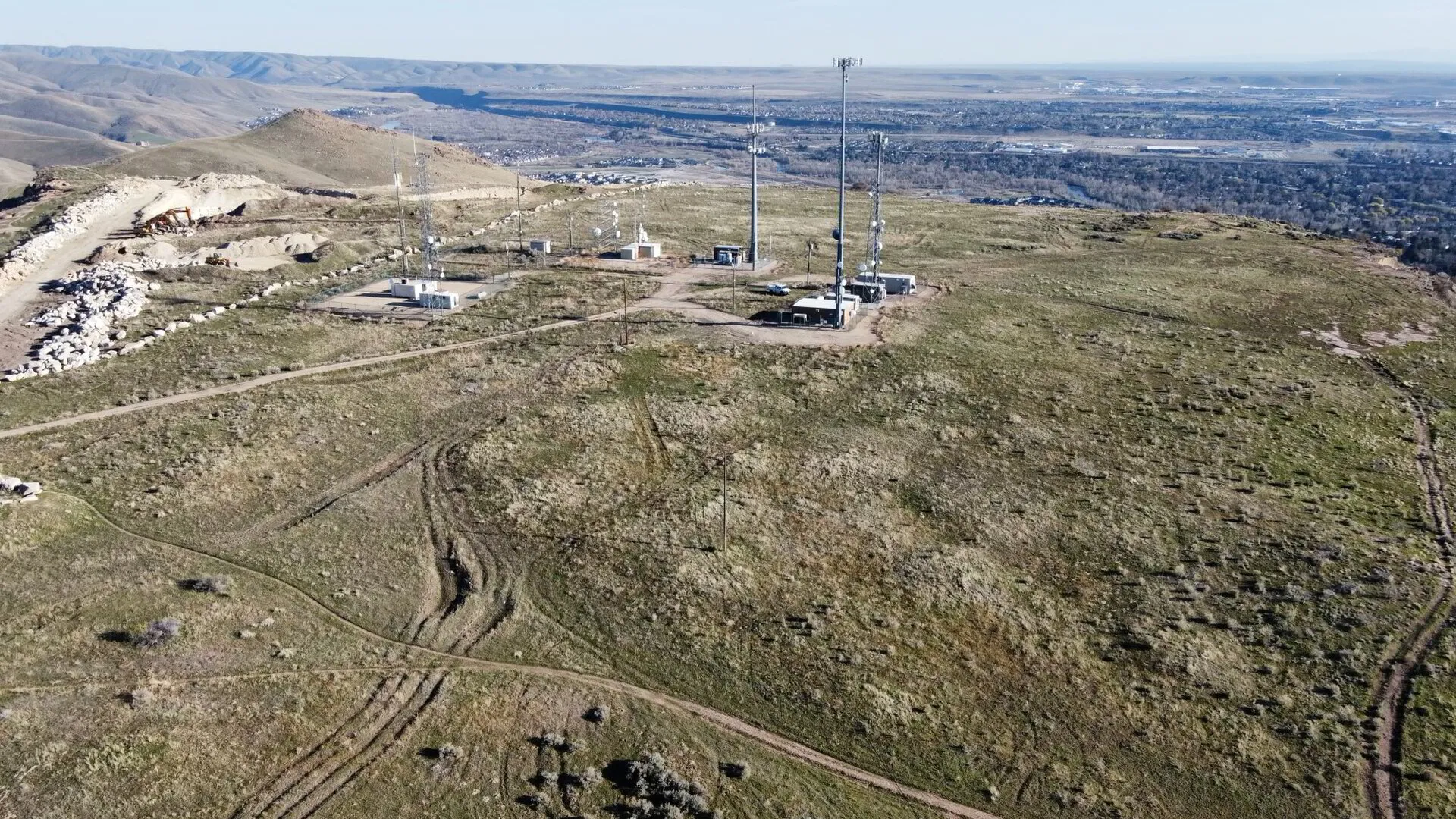
One of the Most Complete Communication Networks in the Northwest
White Cloud Communications Inc., an Idaho-based company with nearly 50 years of expertise, is headquartered in Twin Falls and operates satellite offices in Garden City, Burley, and Idaho Falls. We specialize in advanced two-way radio services, designing, developing, and delivering innovative solutions that boost productivity, enhance safety, and connect people in the toughest environments. Our mission is to provide seamless, reliable, and instant communication for businesses and communities across southern Idaho. With a focus on innovation, quality, and a customer-first mindset, we aim to be the trusted leader in wireless communication solutions.
Industries
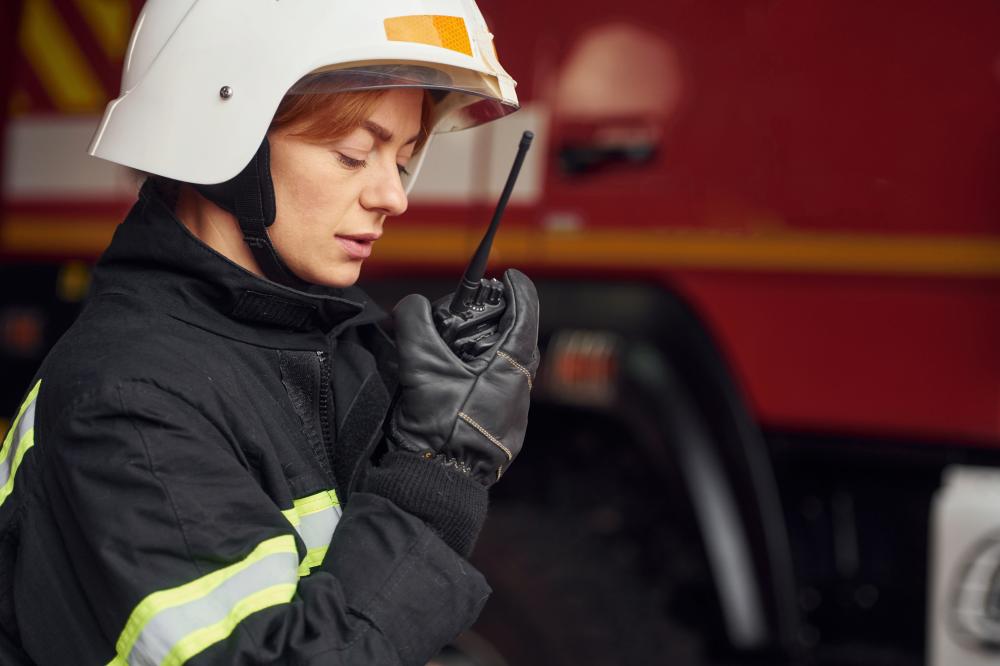
Emergency Radio Communication for First Responders
As a professional with over two decades of experience in the industry, I’ve witnessed firsthand how crucial reliable communication is for first responders. The First Responder Radio Coverage Analysis plays a vital role in ensuring that emergency personnel can communicate effectively during critical situations. This analysis helps identify areas where radio signals may be weak or obstructed, allowing teams to implement solutions that enhance communication reliability.
At White Cloud Communications, we leverage cutting-edge technology and a deep understanding of communication systems to address these challenges. Our solutions ensure seamless communication even in the most challenging environments, enhancing the safety and efficiency of first responders. From Fire & EMS to Law Enforcement, our tailored strategies improve operational coordination across various sectors.
Why is First Responder Radio Coverage Analysis Essential?
First Responder Radio Coverage Analysis is essential for maintaining clear communication channels in emergencies. Without consistent communication, the efficacy of emergency response is significantly compromised. We’ve seen instances where communication breakdowns lead to delayed response times, which can mean the difference between life and death during emergencies.
This analysis helps identify dead zones and areas with poor signal strength, which are often caused by the building structure or geographical obstacles. Rectifying these issues ensures that radios perform at their optimum capacity, enabling first responders to coordinate effectively. White Cloud Communications develops customized solutions to mitigate these challenges, ensuring that our clients maintain robust communication systems.
Our comprehensive approach involves analyzing existing systems, identifying weaknesses, and implementing enhancements tailored to industry-specific needs. We prioritize quality and innovation, ensuring that our clients receive the most reliable communication systems available.
Steps to Conduct a First Responder Radio Coverage Analysis
- Initial Assessment: Conduct a thorough evaluation of the site to identify potential communication barriers and equipment requirements.
- Signal Testing: Measure signal strength across critical areas to identify dead zones and weak signals. Using state-of-the-art tools, we ensure accurate results.
- System Enhancement: Based on the analysis, implement necessary enhancements such as signal boosters, repeaters, or in-building communication systems.
- Verification and Monitoring: Perform a verification test to ensure that enhancements meet industry standards and continuously monitor system performance.
Each step in this process is crucial for maintaining reliable communication channels. Our team at White Cloud Communications has decades of experience in implementing these strategies, ensuring that our clients’ systems are always prepared for emergencies.
What Qualifies as a First Responder Radio Coverage Analysis Emergency?
An emergency that qualifies for a First Responder Radio Coverage Analysis typically involves communication failures during critical operations. These failures can occur due to inadequate signal strength or technological malfunctions in high-stakes situations.
Addressing these emergencies involves thorough signal testing, system evaluations, and deploying enhancements to prevent future disruptions. By proactively conducting an analysis, organizations can avoid emergencies linked to communication shortcomings and ensure a swift, coordinated response during crises.
Real-World Insights from White Cloud Communications
At White Cloud Communications, we have encountered numerous scenarios where our expertise was crucial in resolving communication issues for first responders. For instance, in a mining operation, poor signal strength deep underground posed a significant challenge. Our team conducted a comprehensive First Responder Radio Coverage Analysis and implemented a robust solution that improved signal reliability, ensuring communication continuity.
Our experience across diverse industries such as Oil & Gas, Utilities, and Healthcare has equipped us to handle complex communication challenges. By understanding the unique requirements of each sector, we tailor our solutions to meet specific operational needs and foster seamless communication.
Our commitment to innovation and customer satisfaction drives us to continually improve our processes and solutions. As industry leaders, we ensure that our clients are equipped with the latest communication technologies, enabling them to respond swiftly and effectively in any situation.
- Reliable communication systems customized for specific industries
- Proven track record in enhancing first responder safety
- Commitment to innovation, quality, and customer satisfaction
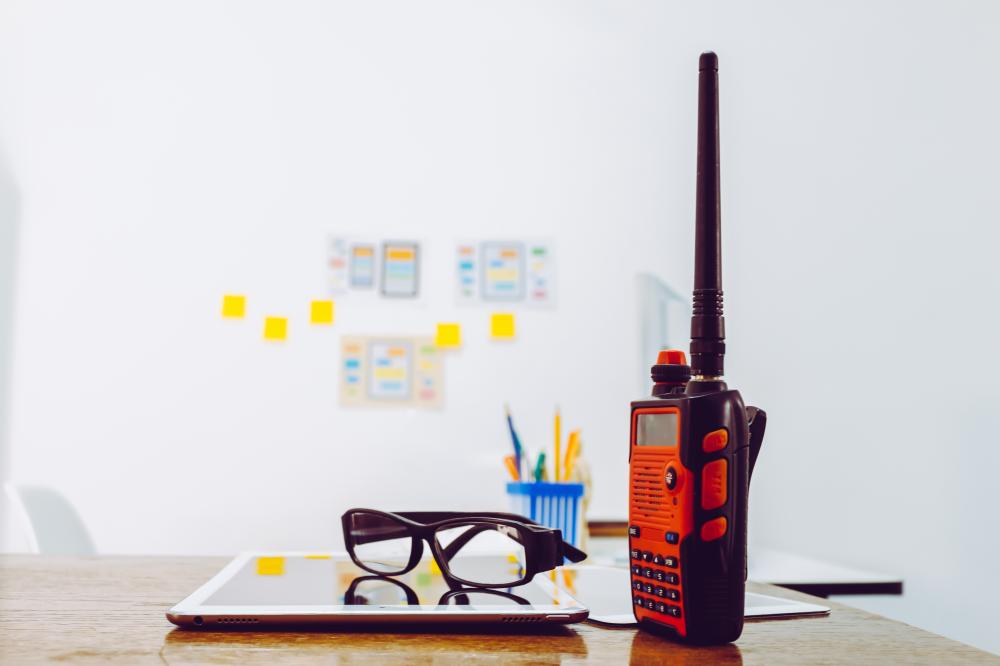
Why Public Safety Radio Matters
Having spent over 20 years in the radio communications industry, I can confidently say that public safety radio is an essential tool for first responders. Used by fire departments, police forces, and emergency medical services, these radios provide fast and reliable communication, crucial during emergencies when seconds count. Imagine a situation where seamless interaction between various departments could mean the difference between chaos and efficient action. Public safety radios make that possible by ensuring uninterrupted communication channels.
In my professional experience at White Cloud Communications Inc., we’ve consistently focused on delivering two-way radio solutions that not only prioritize connectivity but also bolster security and durability. The principles guiding our innovations stem from real-world insights gained from working with diverse sectors, including Law Enforcement and National Security.
How Public Safety Radio Works
At its core, public safety radio is designed to handle high traffic volumes and prioritize communication flow in urgent situations. These radios often operate on dedicated frequencies, ensuring that crucial messages are not lost or delayed. The backbone of these systems is their ability to facilitate encrypted communication, safeguarding sensitive information from unauthorized access.
Our work at White Cloud Communications involves deploying specialized equipment tailored to the distinct needs of agencies we serve. By leveraging the latest advancements in technology, we’ve been able to enhance the interconnectivity of public safety radio systems, ensuring ease of use for our clients at all times, even in the harshest environments.
How to Choose the Right Public Safety Radio
Selecting the appropriate public safety radio system depends on several factors. First, assess the environment in which the radios will operate. Agencies working in urban landscapes might need systems with capabilities distinct from those in rural settings. Next, consider the interoperability requirements; this ensures compatibility with other agencies that might collaborate in crisis scenarios.
Here are the essential steps when choosing a public safety radio:
- Evaluate Coverage Area: Determine the geographical range that needs to be covered.
- Assess Interoperability Needs: Identify other agencies or departments that the system must connect with.
- Check Durability and Reliability: Ensure that the radio systems can withstand challenging conditions.
- Consider Cost and Budget: Balance between budget constraints and necessary features.
These steps should guide agencies to make informed decisions. At White Cloud Communications, we provide hands-on consultations to help organizations tailor solutions that align with their operational demands.
What Qualifies as a Public Safety Radio Emergency?
A public safety radio emergency involves urgent scenarios requiring immediate communication among first responders to mitigate risks and protect communities. Typical instances include natural disasters, active shooter situations, and large-scale accidents.
As a part of White Cloud Communications, we emphasize the necessity of preparing for such emergencies by consistently upgrading and maintaining our radio systems, ensuring they deliver performance when it matters the most.
Exploring the Benefits of Public Safety Radio
Public safety radio systems are designed to enhance operational efficiency and public welfare. One major advantage is their role in disaster management. By providing resilient communication channels, these systems empower emergency teams to coordinate efforts effectively, minimizing the impact of crises on affected populations.
In addition, public safety radios facilitate real-time communication, enabling swift decision-making. Through our partnerships with industry leaders at White Cloud Communications, we ensure our clients access cutting-edge technologies that keep them connected and informed. Our ongoing commitment to innovation helps bridge the communication gap during critical moments.
- Improved response times
- Enhanced coordination between agencies
- Secure, encrypted communication channels
- Robust, reliable performance
Why Fire Code Radio Signal Testing Matters
Fire Code Radio Signal Testing is an essential component of ensuring safety in buildings. This testing ensures that emergency responders can effectively communicate during critical situations. At White Cloud Communications Inc., with nearly 50 years in the wireless communication industry, we emphasize the importance of robust communication systems in emergencies. When seconds count, having a reliable radio signal can be the difference between life and death.
Strong and clear radio signals allow first responders to coordinate their efforts efficiently, no matter the building’s layout or size. We have seen firsthand the difference that proper Fire Code Radio Signal Testing can make, especially in complex facilities like hospitals and educational institutions. Our experience with various industries has reinforced the critical need for maintaining high standards in communication systems.
How Is Fire Code Radio Signal Testing Conducted?
As experts in communication technology, we at White Cloud Communications have developed a meticulous process for Fire Code Radio Signal Testing. Here’s a step-by-step overview of how testing is typically performed:
- Designate Grid Layout: Establish a grid layout on each floor, ensuring at least 20 grid cells to assess radio signal strength comprehensively.
- Signal Measurement: Use calibrated equipment to measure the Delivered Audio Quality (DAQ) at the center of each grid cell, aiming for a DAQ of 3.0.
- Evaluate Critical Areas: Pay special attention to critical facilities such as fire command centers, ensuring at least 99% of these areas meet the standards.
- Identify Weak Spots: Note any grid cells with insufficient signal and plan for enhancements or installation of Emergency Responder Communication Enhancement Systems (ERCES).
This thorough approach helps identify potential communication barriers within the building, allowing for necessary interventions.
Benefits of Effective Fire Code Radio Signal Testing
Ensuring effective Fire Code Radio Signal Testing offers numerous benefits that go beyond compliance. For starters, it provides peace of mind to building owners, knowing that their facilities are prepared for emergencies. Moreover, good signal quality reduces the chance of communication breakdowns, enhancing overall safety for occupants.
At White Cloud Communications, we have witnessed enhanced operational efficiency within businesses that prioritize this testing. For instance, in the healthcare sector, quick and reliable communication can significantly impact patient outcomes. Similarly, in the mining industry, it ensures workers can be reached promptly in hazardous conditions.
- Better coordination during emergency operations
- Increased safety for building occupants
- Improved compliance with national fire codes
- Enhanced reputation as a safety-first organization
What Qualifies as a Fire Code Radio Signal Testing Emergency?
If a building fails to meet the National Fire Protection Association (NFPA) standards for radio signal strength, it qualifies as an emergency. This indicates that emergency responders may struggle to maintain effective communication, necessitating immediate corrective action.
Fire Code Radio Signal Testing emergencies are not uncommon, especially in older buildings or those constructed with materials that block radio signals. In these cases, installing an ERCES or similar system based on NFPA guidelines becomes critical to ensuring safety. The goal is to guarantee that all critical and general areas meet the required signal strength for effective emergency communication.
Overcoming Common Challenges in Signal Testing
Conducting Fire Code Radio Signal Testing can pose several challenges. Key among them is the detection of dead zones within buildings that impede communication. Our team at White Cloud Communications often encounters this issue in large or complex structures, where signal obstructions are more prominent.
Our solution? Implement bi-directional antennas to boost signal strength. By strategically placing these systems, we can enhance radio coverage and eliminate dead zones. We also advise on regular maintenance and periodic testing to adapt to any changes in building layouts or usage over time.
As pioneers in wireless communication solutions in Idaho, we understand the nuances of ensuring reliable radio signals. Whether it’s a skyscraper in Boise or a rural healthcare facility, our expertise guides us in providing optimal solutions tailored to unique building conditions.
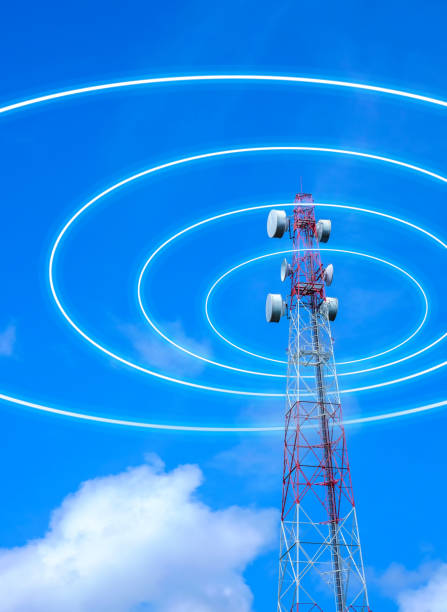
Why is First Responder Radio Coverage Analysis Essential in Ensuring Public Safety?
Having reliable communication is crucial for first responders when dealing with emergencies. As someone who has spent decades in this field, I’ve seen the detrimental effects when communication systems fail. Radio Coverage Analysis identifies weak spots in signal coverage, allowing us to address these issues proactively. In one instance, during a particularly challenging wildfire season, our team worked tirelessly to cover dead zones, which drastically improved the coordination of firefighting efforts.
If you’re considering how this analysis might affect your organization, think about the potential for improved response times and increased safety for both responders and the public. Consider what current communication challenges your team faces. Could improving radio coverage change these outcomes?
What Are Common Misconceptions About First Responder Radio Coverage Analysis?
One common misconception is that a strong signal outside a building automatically implies good coverage inside. In reality, building materials can significantly weaken signals. I’ve often advised clients to consider this when evaluating their radio systems. Another misunderstanding is thinking that once a system is set up, it’s foolproof. Regular testing and maintenance are crucial because changes in the environment or structure can affect signal quality over time.
Have you ever entered a building where your phone reception suddenly dropped? This can happen with radio signals too, and addressing it is vital for emergency communications. What steps could you take to ensure seamless communication in complex environments?
How Can Advanced Technology Enhance First Responder Radio Coverage?
With the evolution of technology, solutions like bi-directional antennas and signal boosters have become game-changers in enhancing radio coverage. At White Cloud Communications, we utilize these technologies to fill coverage gaps and improve signal reliability. In one project, implementing enhanced technologies in a mining site allowed workers to maintain communication deep underground, which is pivotal for safety.
Think about your organization’s needs. Could adopting newer technologies improve your communication systems? What impact do you think this would have on safety and operational efficiency?
What Role Does Public Safety Radio Play in Emergency Response?
Public safety radios are the backbone of communication among first responders. They’re designed to withstand the rigors of emergency scenarios, providing secure and reliable communication channels. I recall a flood incident where these radios were instrumental in coordinating rescue operations across different agencies, ensuring a swift and organized response.
Consider how comprehensive your current communication systems are. Are there areas where public safety radios could enhance your overall emergency response plan?
What Factors Should You Consider When Choosing a Public Safety Radio System?
Choosing the right system involves understanding your geographical and operational needs. It’s crucial to consider coverage area, interoperability, durability, and budget constraints. For example, in remote areas, systems that support wider coverage are essential. At White Cloud Communications, we often guide clients through these considerations to tailor solutions that meet their specific needs.
Have you evaluated your current system’s effectiveness lately? What criteria would be most important for you if you were choosing a new system today?
Why Does Fire Code Radio Signal Testing Matter?
Testing is pivotal for ensuring that emergency responders maintain effective communication during critical events. In complex facilities like hospitals, having a robust communication system can literally be a lifesaver. Our team at White Cloud Communications has seen firsthand the benefits of maintaining high standards in signal quality, which has resulted in more efficient emergency responses.
Is your facility adequately prepared? What could you do to enhance signal testing procedures in your environment?
What Are Common Challenges in Conducting Radio Signal Testing and How Can They Be Overcome?
Challenges often include detecting dead zones and dealing with signal obstructions. In large buildings, these issues can be pronounced. Implementing bi-directional antennas can address these concerns effectively. Our experience has shown that regular testing and strategic use of technology significantly improve coverage.
Could your building benefit from an assessment for these dead zones? How do you currently handle unexpected communication issues?
What Qualifies as a Fire Code Radio Signal Testing Emergency?
When a building doesn’t meet the NFPA standards for signal strength, it qualifies as an emergency. This indicates that responders may be hindered in their communication efforts, which is a serious safety concern. Immediate corrective actions, like installing signal enhancers, are essential.
Does your facility meet these standards? What proactive measures could you implement to prevent such emergencies?
Resources
- National Fire Protection Association – The NFPA is a leading authority on fire, electrical, and building safety. Their guidelines and standards play a crucial role in ensuring the implementation of effective fire code radio signal testing.
- Federal Communications Commission (FCC) – The FCC regulates interstate and international communications by radio, television, wire, satellite, and cable. They provide valuable information on radio communication regulations and best practices.
- U.S. Department of Homeland Security – The DHS plays a key role in coordinating national efforts to ensure public safety, including communication systems for first responders. Their insights are invaluable for understanding the importance of public safety radio.
- U.S. Fire Administration (USFA) – The USFA, part of FEMA, works to improve fire prevention and safety through training, education, and data analysis. Their resources offer valuable insights into fire code regulations and emergency response communication.
We are certified dealers of the following brands:

